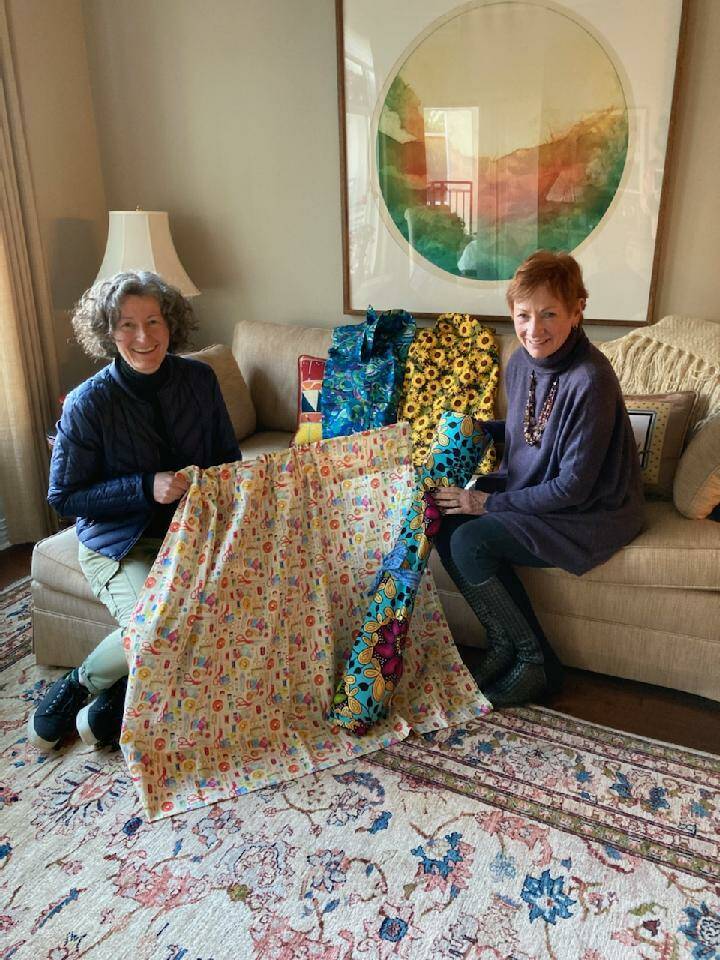Mercer Island resident and Rotarian Bonnie Cundiff figured she’d be doing some painting while helping build tiny homes at the Hope Factory in Seattle last year.
Cundiff said she and the other “older ladies” soon had power nailers, drills and other tools buzzing in their hands as they constructed the abodes for the homeless.
It was a great day, she said, adding, “You just felt so good that you were really doing something to contribute to other peoples’ lives and quality of life and so forth.”
She noticed something missing during the building process, though: curtains. Cundiff — who sews, needlepoints and knits — asked the supervisor if anyone made the curtains and was told that was the missing link.
The Hope Factory had now found its curtain constructor. When Cundiff went home to her apartment at the Aljoya retirement community on Mercer Island, she made a commitment to herself to make curtains for every tiny home built at the factory.
This year, the Hope Factory is planning to build 300 homes, so that means 600 curtains, said Cundiff, who spread the word about her plan and currently has about 50-100 people sewing curtains or contributing funds and resources to her project, which also includes curtain rods to complete the package.
On March 22, she delivered the crew’s 270th curtain amongst a batch of 30 to the Interbay Village. Other villages they’ve made curtains for are Friendship Heights, Whittier Heights, True Hope, TC Spirit and Camp Second Chance.
“I’ve done a lot of activist things in my lifetime, but it’s the only thing I have ever done where every response is positive. People just have flocked to it,” said Cundiff, noting that members of her Solemates hiking group — led by Fran Call — pitched in with $300. She noted that the curtain crew involves some Rotarians but is not a Rotary project.
Sewers involved in the widespread project come from Mercer Island, Kirkland, Bellevue and Seattle. One group of participants from Bellevue made 57 curtains through their friendship circle. Another curtain maker used her grandmother’s 1936 sewing machine to get the job done. Some people buy fabric to make their curtains while others get creative by using Goodwill-bought sheets or old tablecloths.
“Any time you’re giving of your time or talents, you get back twice as much as you ever give. It is so rewarding,” said Cundiff, who noted that she’s heard some tiny home residents remark, “They’ll say, ‘Oh, look at the colors,’ ‘Oh, aren’t they gorgeous?’ It makes your day.”


